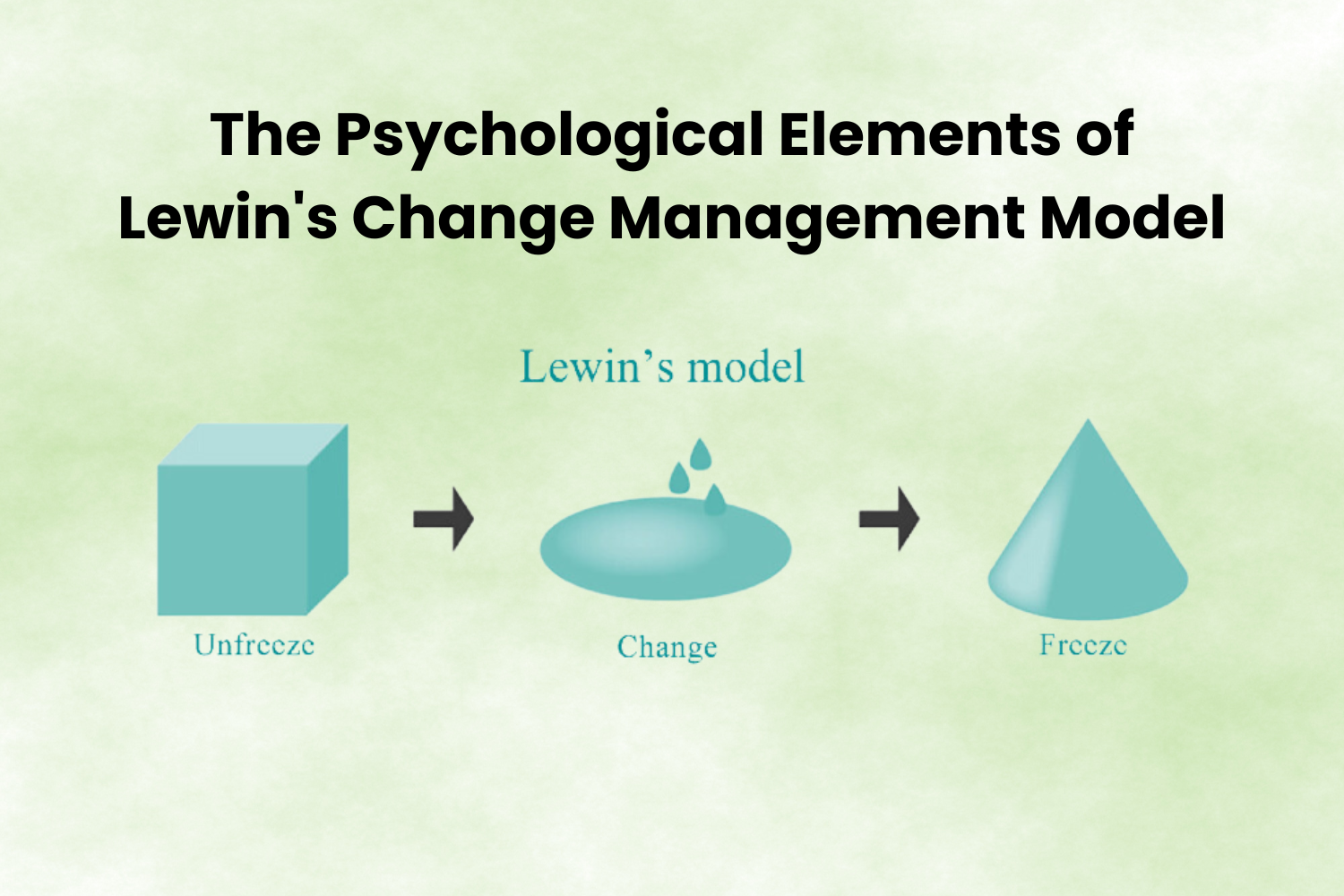
In organisations, resistance, apprehension, or outright defiance are common responses to change. It's a psychological barrier deeply embedded in human behaviour. Kurt Lewin's Change Management Model, a three-step procedure created in the middle of the 20th century, is still a fundamental framework for navigating this maze. Its psychological understanding of change dynamics has made it crucial for practitioners seeking Change Management Certification, acting as a guide through the challenges of organisational transitions. It requires a closer examination of their psychological foundations to understanding the three stages of Lewin's Change Management Model - Unfreeze, Change, and Refreeze.
Understanding the Unfreeze Stage
The transition starts with the Unfreeze phase. The equilibrium that exists is disturbed in order to get the organisation ready for upcoming changes. Psychologically speaking, the objective is to upend the status quo and eliminate resistance to change by raising consciousness of the necessity of transformation.
The process frequently entails drawing attention to issues and flaws in existing systems to help people see the need for change. The psychological challenge here is overcoming cognitive biases like confirmation bias and anchoring, which can blind people to patterns they are acquainted with. Leaders must craft an engaging narrative that allows employees to see a future in which present issues are resolved. This entails sensitivity and skilful communication, reiterating that the change is a step towards organisational and individual progress rather than an assault on one's competence.
Exploring the Change Stage
The organisation moves into the Change phase when established norms are disrupted during the Unfreeze stage. This stage represents the real change in behaviour, attitudes, and practices. It involves exploring new ideas and acquiring new behaviours.
People frequently deal with ambiguity and uncertainty, which psychologically causes tension and worry. The psychological idea of learning anxiety is important in this situation. People could worry that if they can't adjust to the new standards, they won't perform well or are rejected by others. Thus, leaders should set up reliable support networks. They could include coaching, mentoring, or training sessions to help with clarity and confidence in the new processes.
Another psychological factor that comes into play is social proof. Workers are more inclined to embrace new habits if they observe their peers adjusting to the change effectively. Leadership advocacy and peer pressure can considerably influence the adoption process.
- Japan brings cheer to Gokwe
- Commodity price boom buoys GB
- 9 000 farmer field schools on cards
- Biti’s applications for referral to Concourt continues
Keep Reading
Reinforcing with the Refreeze Stage
The ultimate goal of the Refreeze stage is to cement the modifications and make the new behaviours long-lasting. The new corporate culture and standards are created here.
This stage is based on the psychological concept of reinforcement. While negative reinforcement—such as doing away with antiquated procedures—prevents relapse, positive reinforcement—such as awards and recognition—helps establish new behaviours. In order to sustain the new balance, leaders must also provide a clear structure and direction to address the psychological demand for stability. This entails adjusting performance measures, job roles, and regulations to reflect the new standards.
Yet another important psychological component is group norms. Peer pressure frequently assures compliance when many workers accept the new standards. It takes careful nurturing, emphasising the benefits of the transformation, and maintaining constant communication to develop this unified mindset.
Psychological Challenges and Strategies in Change Management
Although each step has unique psychological obstacles, certain general techniques can help with the shift at every level.
Communication and Transparency
Overcoming a fear of the unknown requires regular, open communication. Feedback and changes may be made during open discussions, ensuring that staff members feel more invested in the process rather than merely following orders from above.
Empathy and Support
Leaders must show empathy by realising that change frequently causes emotional upheaval. Offering a psychologically secure space to voice issues without fear of retribution can greatly aid in building trust and commitment among employees.
Training and Development
Investing in training and development opportunities helps reduce the anxiety associated with learning new tasks or responsibilities. Leaders can disseminate knowledge to mitigate opposition and cultivate a workforce equipped to tackle novel issues.
Rewards and Recognition
Incentives and recognition serve as powerful motivators for people. Positive behaviour can be reinforced with even modest rewards, and positive reinforcement in public can inspire others to follow suit and raise spirits.
Conclusion
Lewin's Change Management Model's psychological components are still as important now as they were back then. The Unfreeze, Change, and Refreeze phases give businesses a systematic process to follow, which helps them to handle change better. Comprehending the psychological nuances at every phase enables leaders to foresee obstacles and use suitable tactics. Lewin's Change Management Model is still a reliable framework for leading an organisational makeover or obtaining change management certification.










